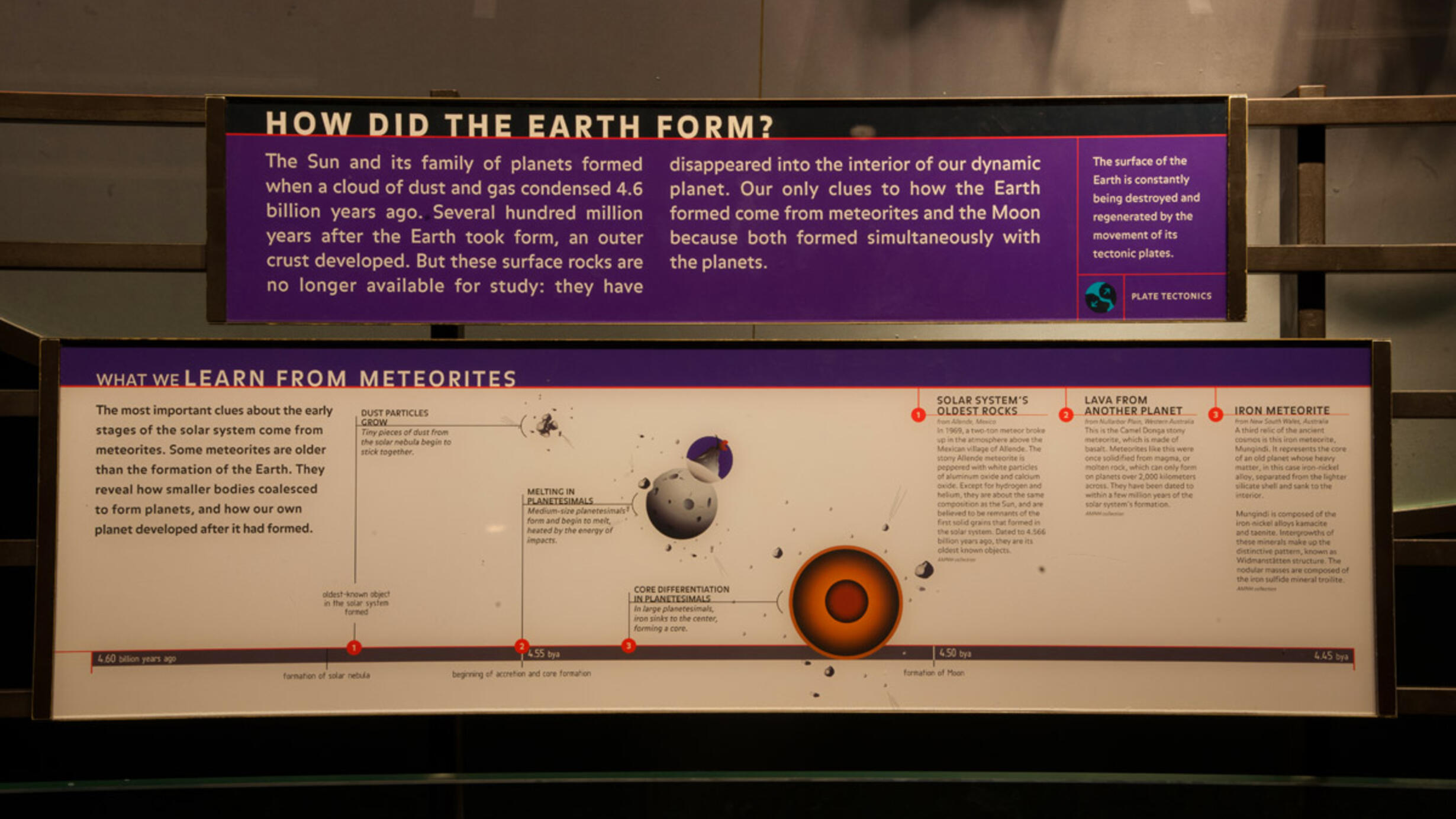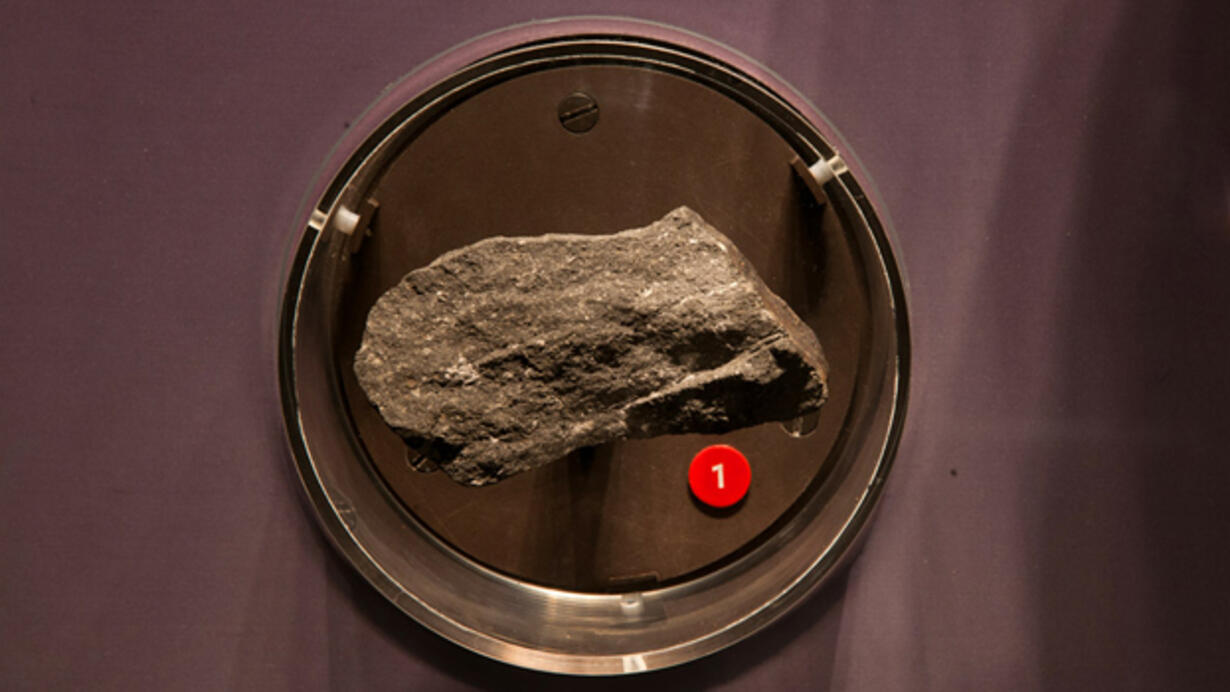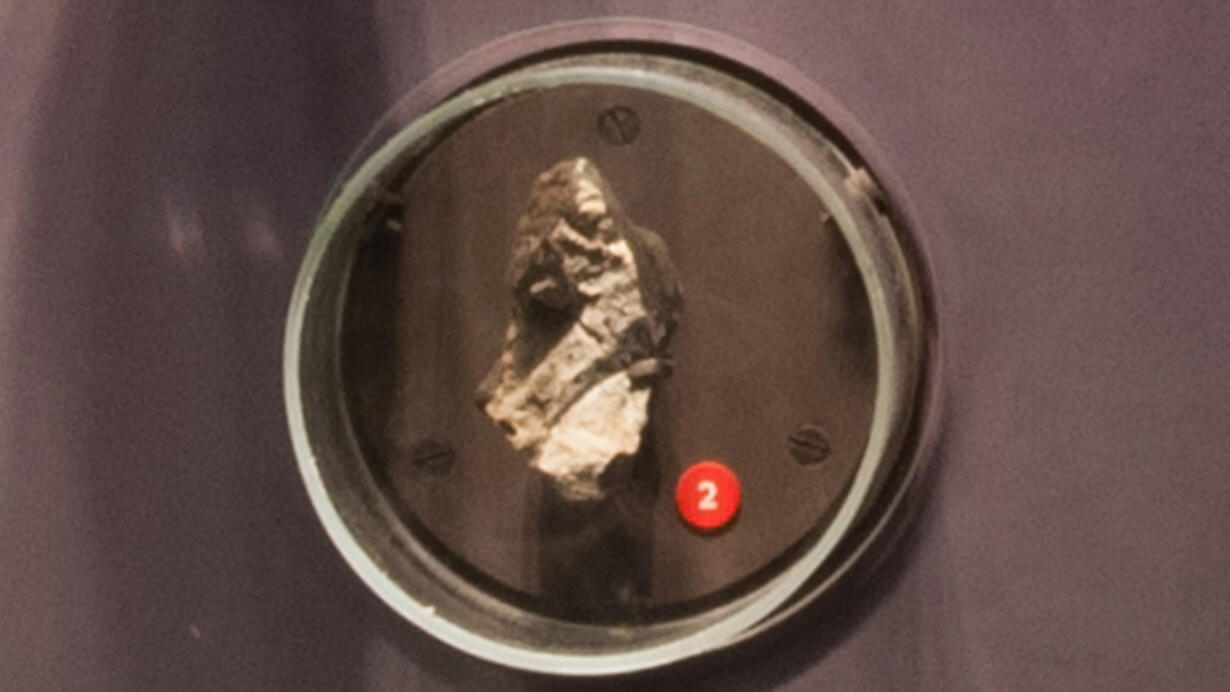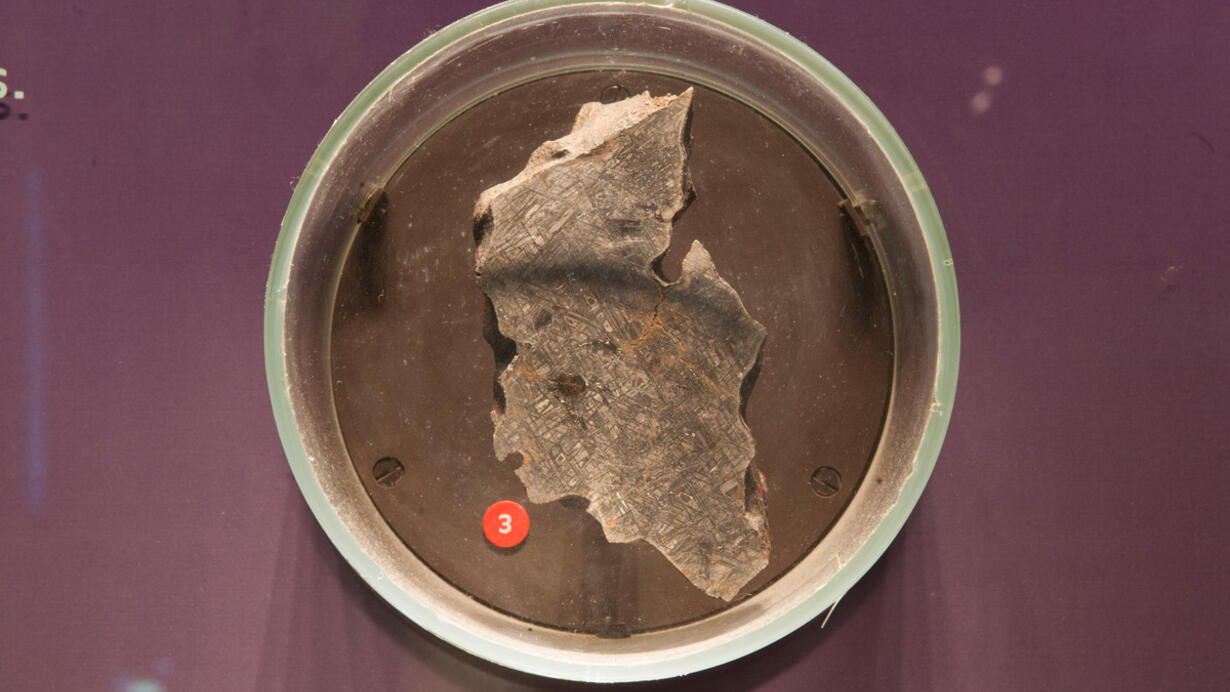What We Learn From Meteorites
Part of Hall of Planet Earth.
 AMNH/R.Mickens
AMNH/R.Mickens Some are older than the formation of the Earth. They reveal how smaller bodies coalesced to form planets, and how our own planet developed after it had formed.
In This Section

Solar System's Oldest Rocks
In 1969, a two-ton meteor broke up in the atmosphere above the Mexican village of Allende. The stony Allende meteorite is peppered with white particles of aluminum oxide and calcium oxide. Except for hydrogen and helium, they are about the same composition as the Sun, and are believed to be remnants of the first solid grains that formed in the solar system. Dated to 4.566 billion years ago, they are its oldest known objects.

Lava From Another Planet
This is the Camel Donga stony meteorite, which is made of basalt. Meteorites like this were once solidified from magma, or molten rock, which can only form on planets over 2,000 kilometers across. They have been dated to within a few million years of the solar system’s formation.
 AMNH/R.Mickens
AMNH/R.Mickens Iron Meteorite
A third relic of the ancient cosmos is this iron meteorite, Mungindi. It represents the core of an old planet whose heavy matter, in this case iron-nickel alloy, separated from the lighter silicate shell and sank to the interior.
Mungindi is composed of the iron-nickel alloys kamacite and taenite. Intergrowths of these minerals make up the distinctive pattern, known as Widmanstätten structure. The nodular masses are composed of the iron sulfide mineral troilite.